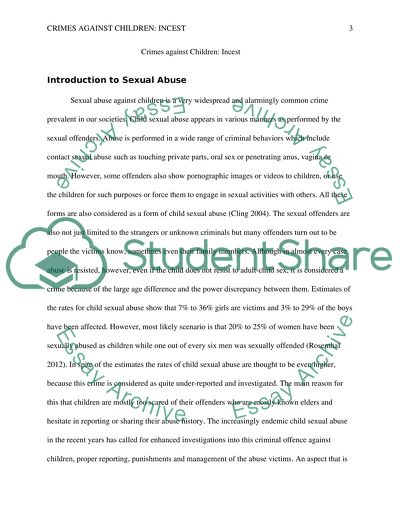Cite this document
(“Crimes Against Children: Incest Research Paper Example | Topics and Well Written Essays - 2750 words”, n.d.)
Retrieved from https://studentshare.org/law/1400509-crimes-against-children-incest
Retrieved from https://studentshare.org/law/1400509-crimes-against-children-incest
(Crimes Against Children: Incest Research Paper Example | Topics and Well Written Essays - 2750 Words)
https://studentshare.org/law/1400509-crimes-against-children-incest.
https://studentshare.org/law/1400509-crimes-against-children-incest.
“Crimes Against Children: Incest Research Paper Example | Topics and Well Written Essays - 2750 Words”, n.d. https://studentshare.org/law/1400509-crimes-against-children-incest.


